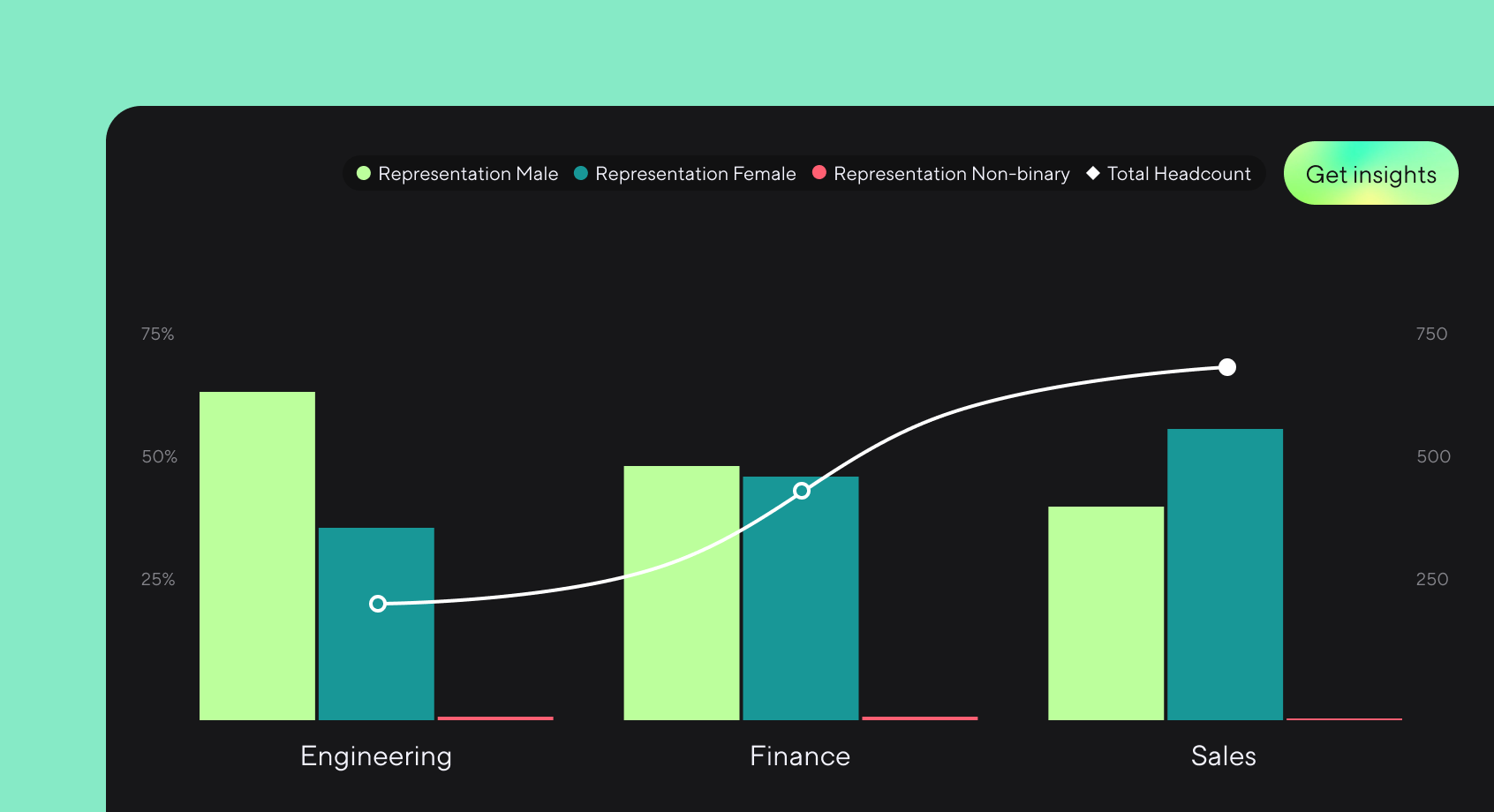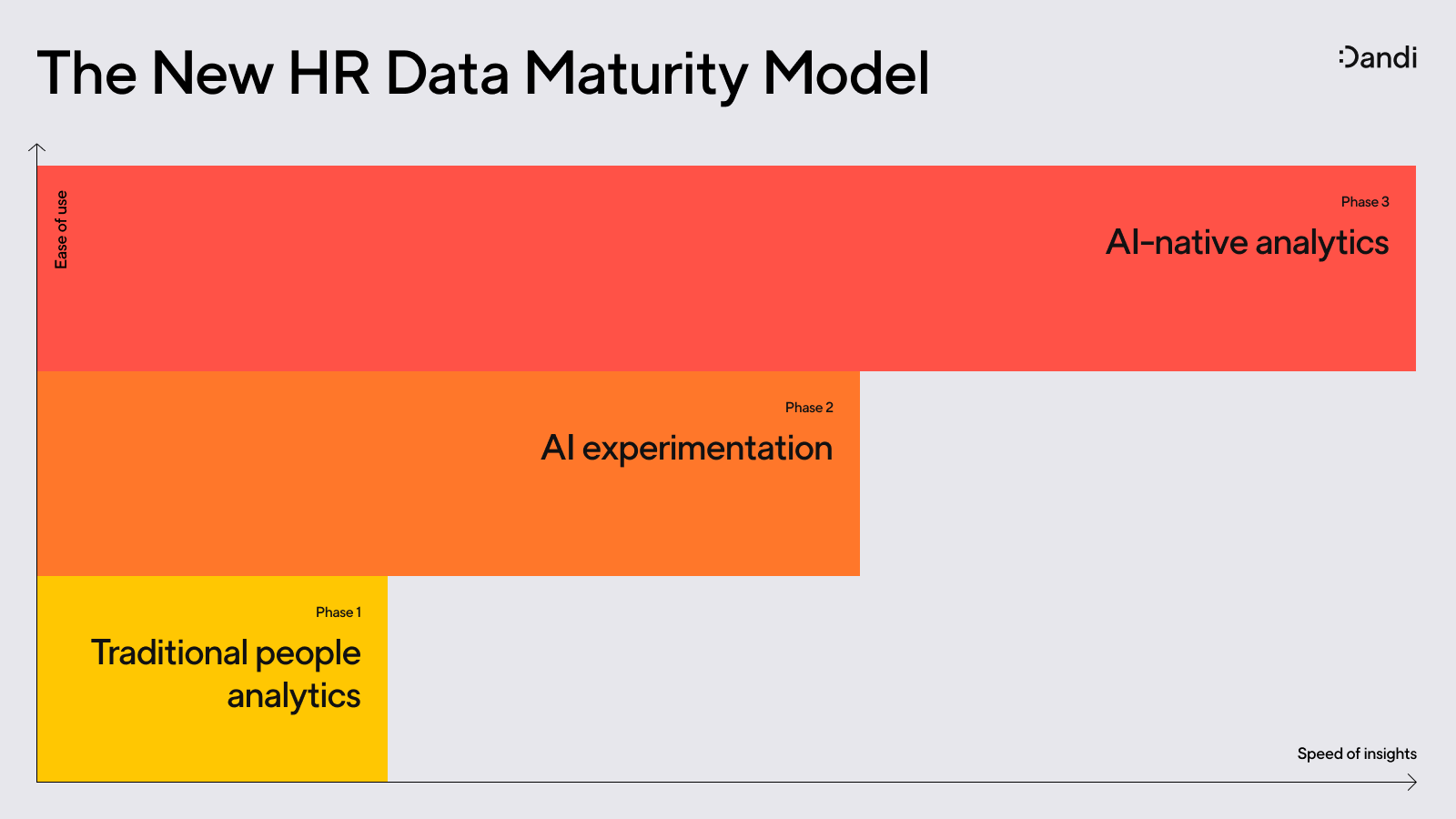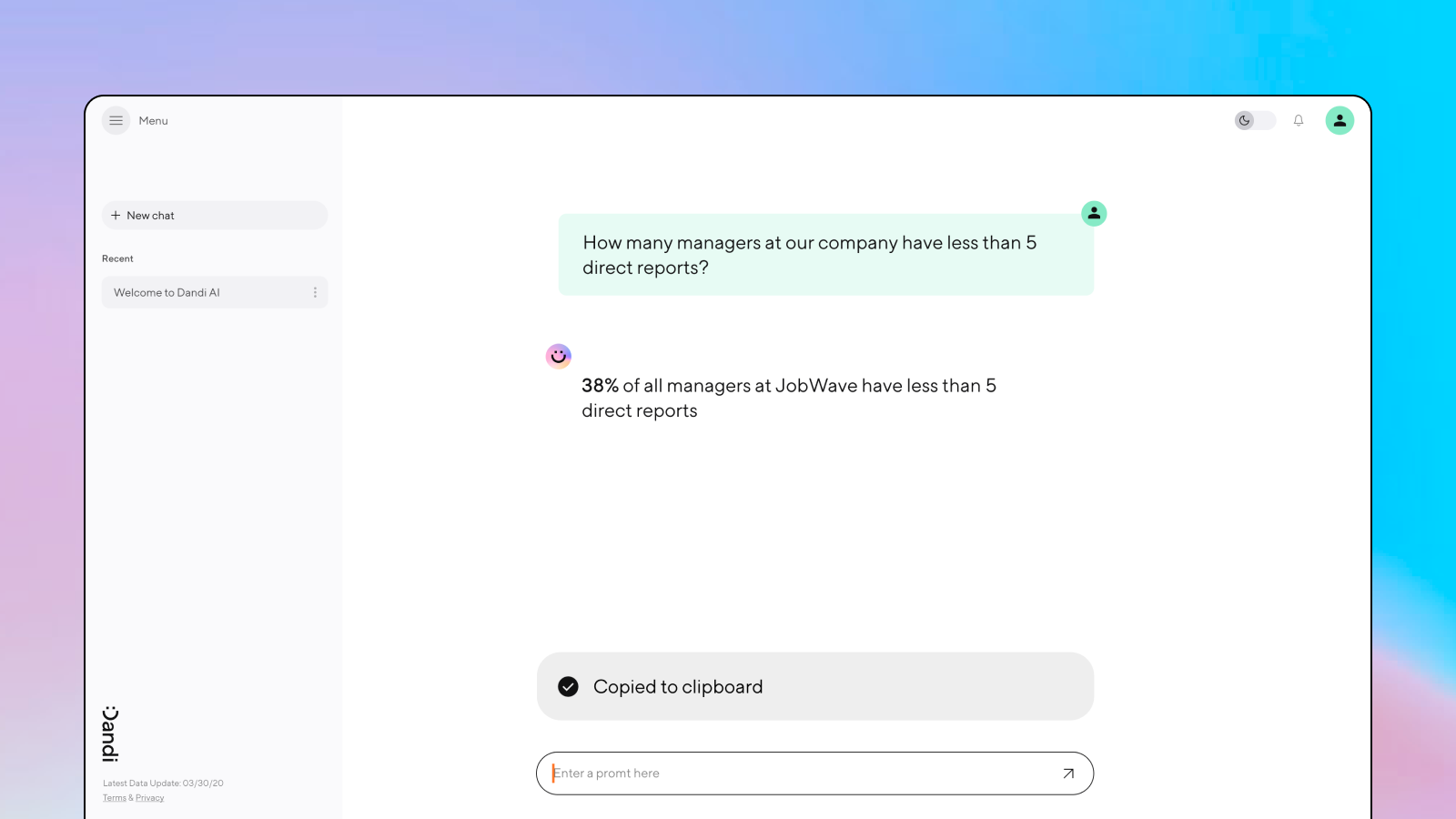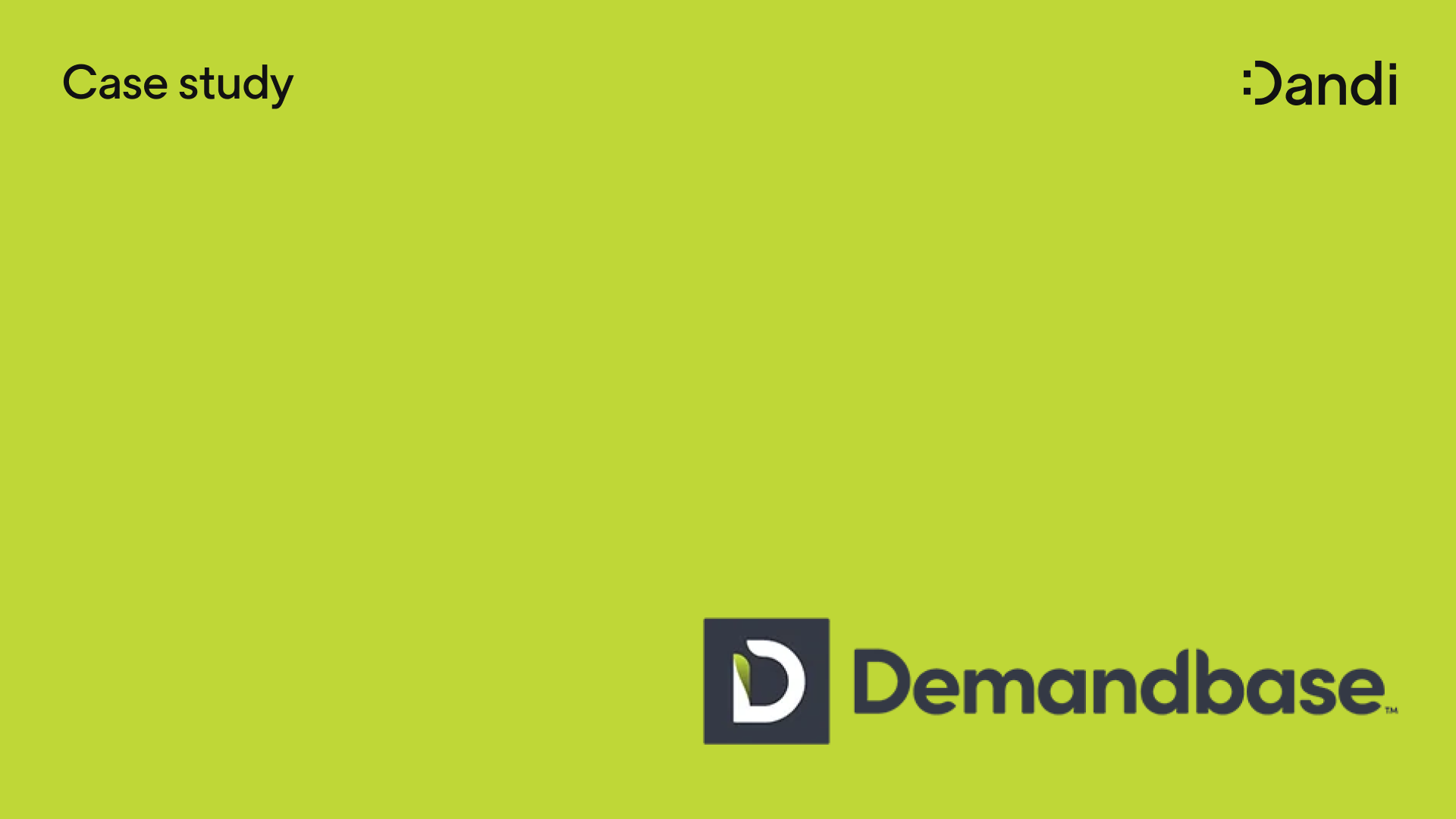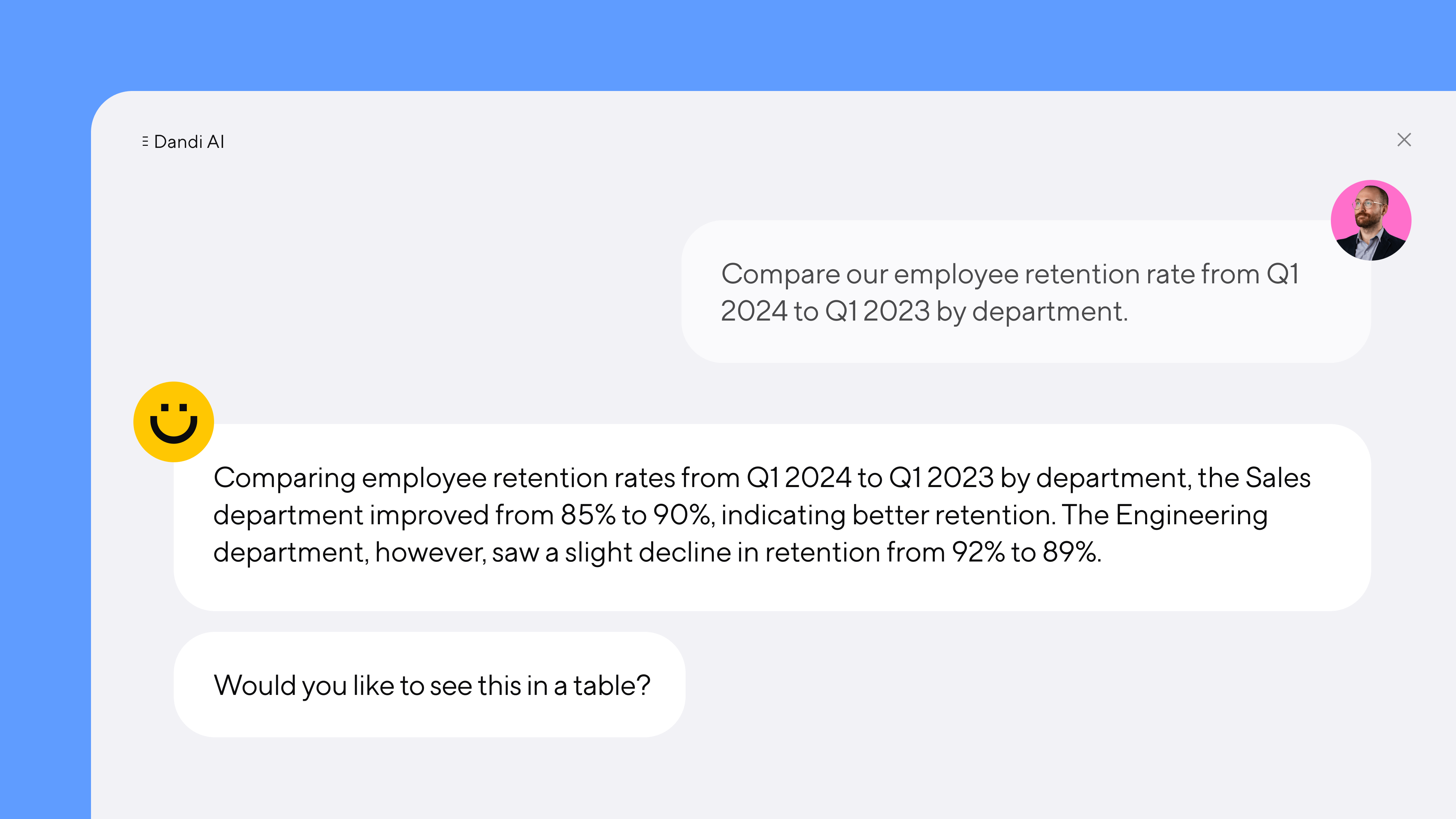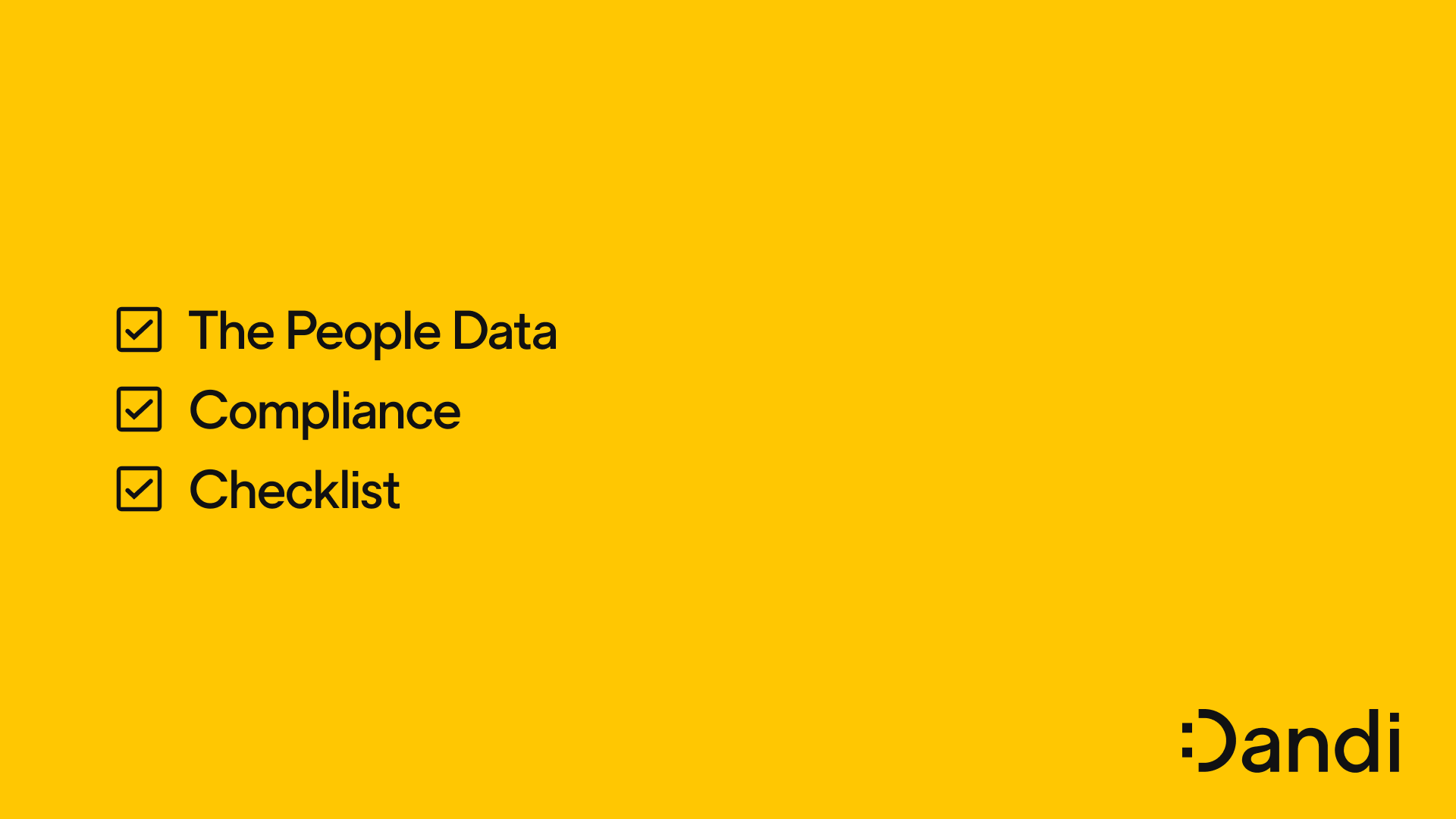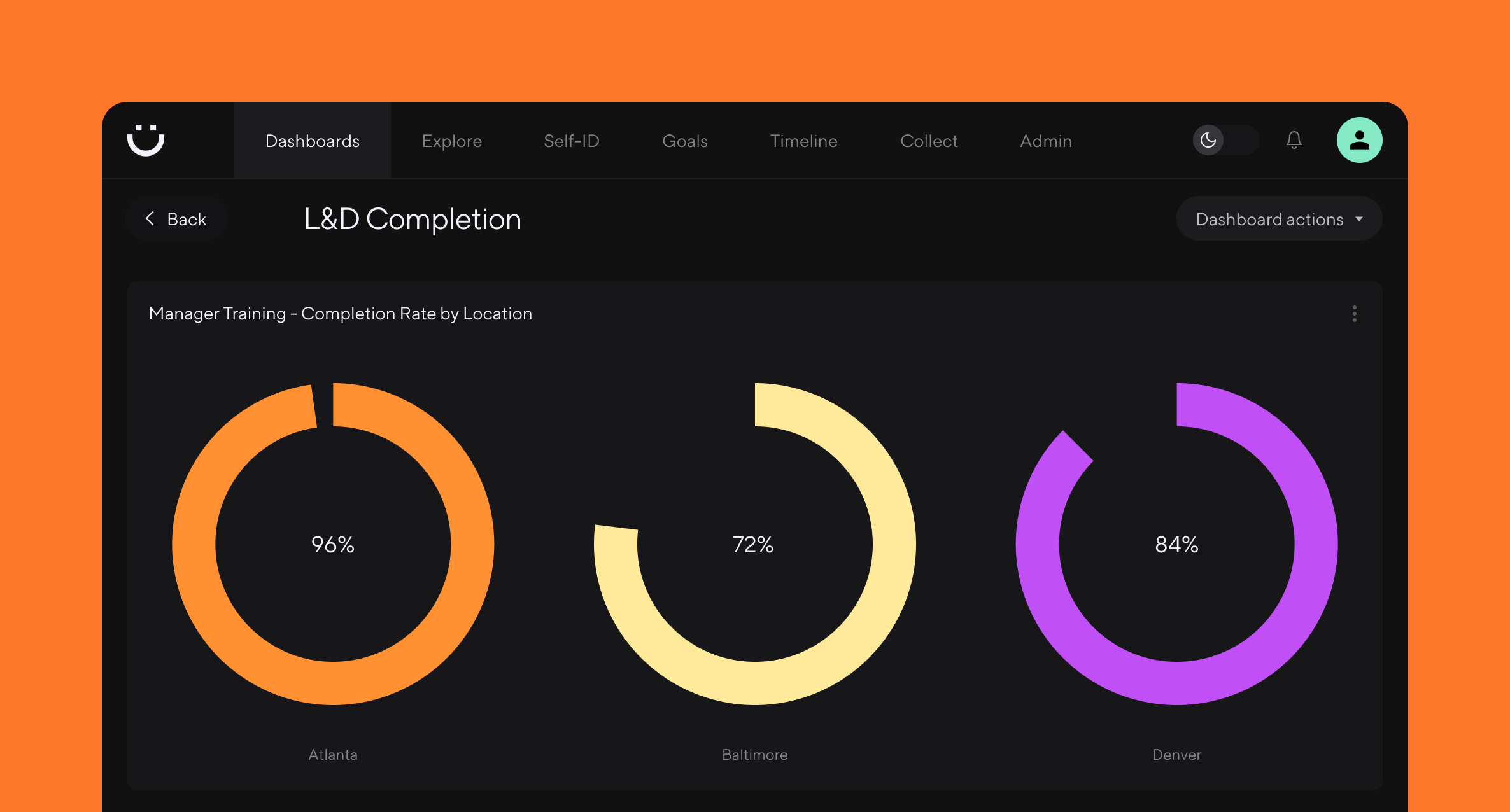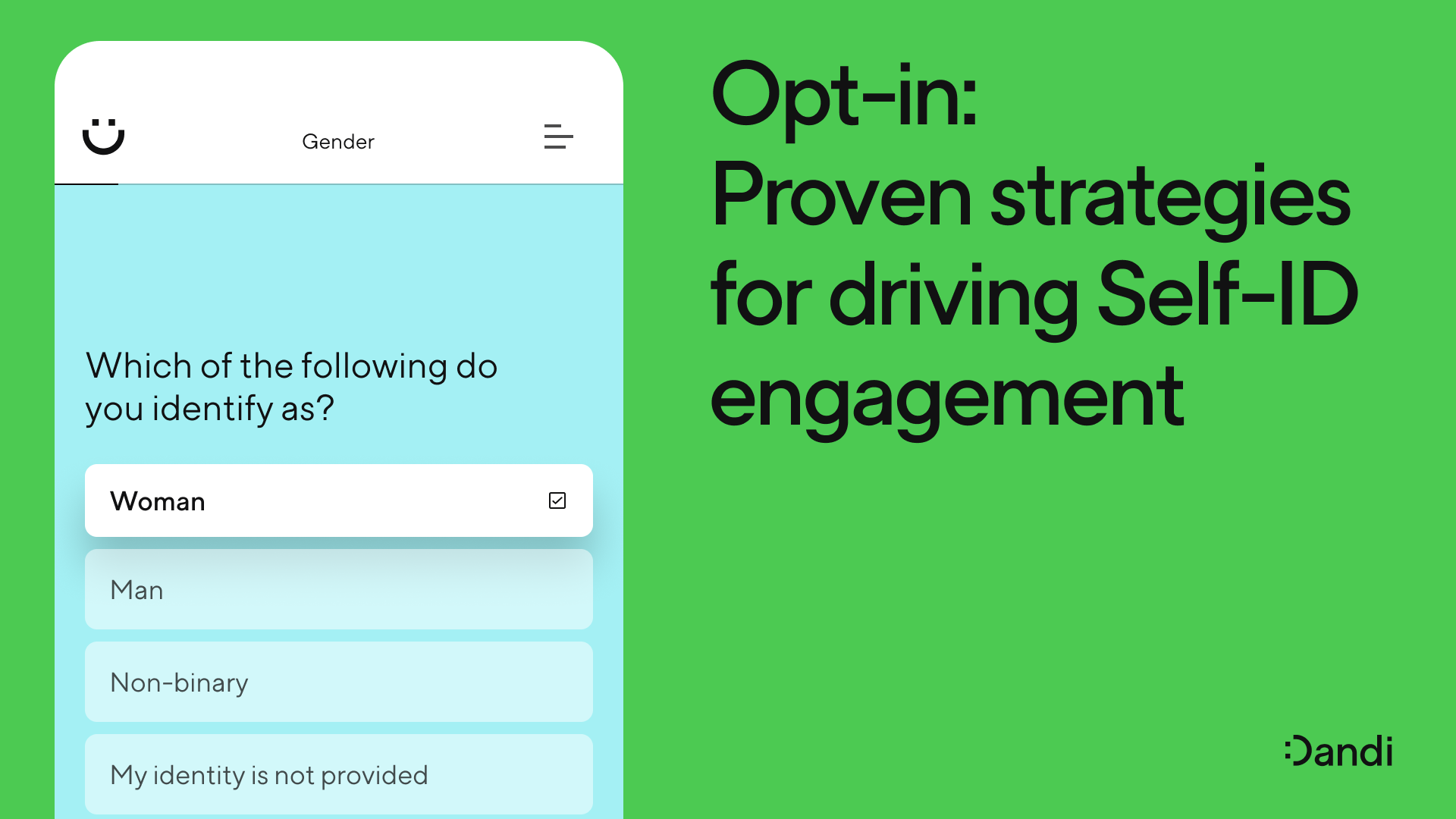How to define success for your ERGs
Hallie Bregman, PhD – Aug 16th, 2023
Employee resource groups are hugely popular, but often go unmeasured. In this article, we explain how to support your ERG programs with data.
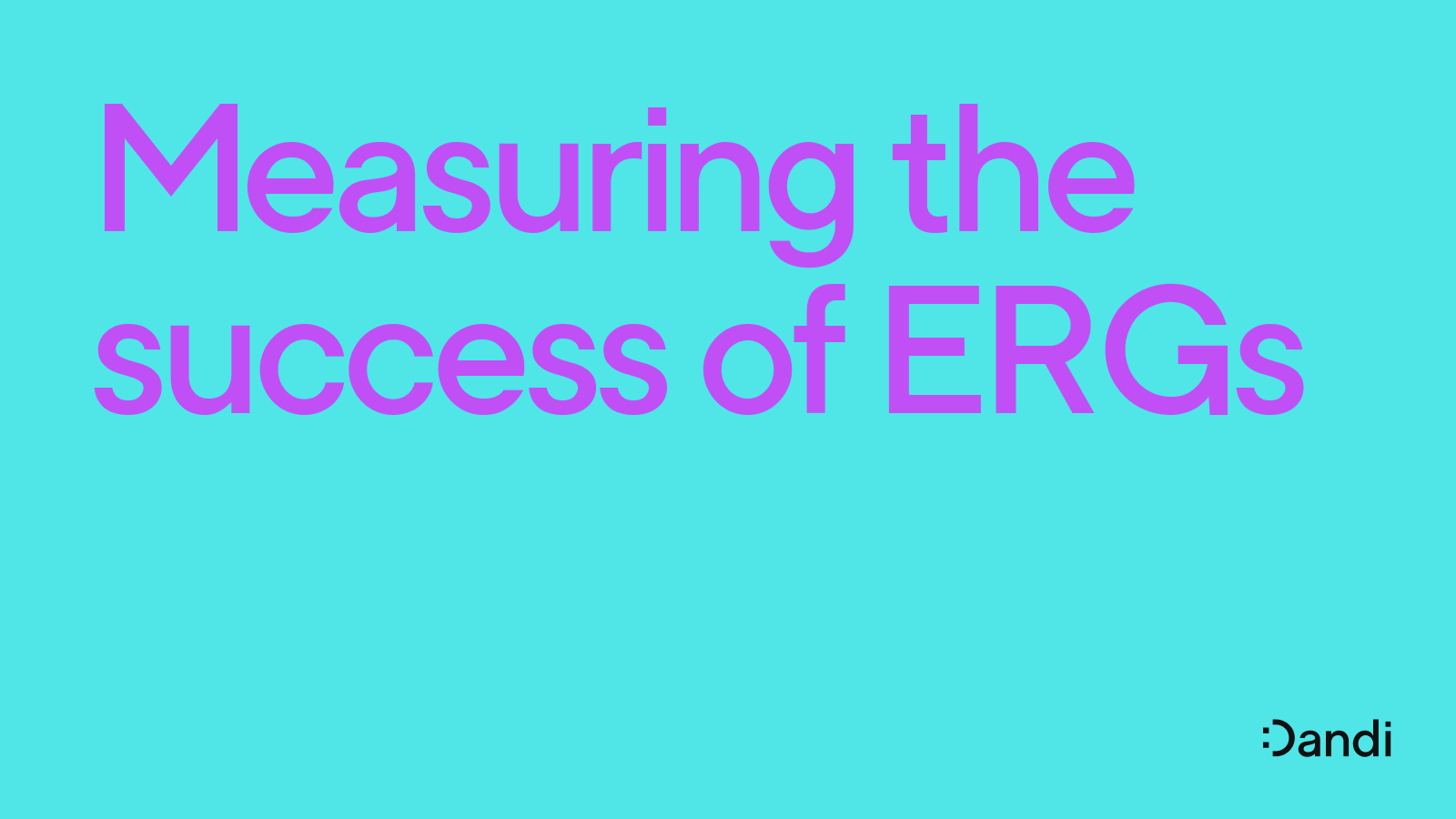
Employee Resource Groups (ERGs) just might be the most popular DEI tactic used in workplaces today. They are flexible, relatively easy to start, and often beloved by employees.
At their best, ERGs can foster increased feelings of inclusion and belonging among different employee groups, and build new connections across the company. Too often, though, companies simply implement ERGs without stating or measuring goals for them. The risks to this approach are both obvious and subtle.
Without goals, it’s impossible to know if your ERGs are actually moving the needle on DEI. That’s the obvious problem. The subtle problem is this: From staffing support to event budgets, there are real dollars going into ERG programs. Budgets are always at risk of being cut, and if we cannot demonstrate effectiveness, we increase our risk of losing funding.
Too often companies simply implement ERGs without stating or measuring goals for them. The risks to this approach are both obvious and subtle.
Speaking of funding, what if ERGs are not successful? Could we re-allocate those dollars and employee time into programs that are effective? Would that better serve our mission? If so, isn’t that something we should know?
Furthermore, we need to be able to celebrate our successes. If we know that ERGs are working, then we can shout from the rooftops. We can let our employees know, our investors know, our leadership know, “Hey, this program works!”
In short, there are many reasons to bring a data-driven mindset to your ERG programs. In this article, I’m going to explain how you can get started.
ERGs, explained
ERGs typically originate when a group of employees share a common cause. Commonly, a women’s ERG is one of the first to start, followed by ERGs for LGBTQ+ and BIPOC employees. These usually start as communities, organically designed to bring folks of the same identity together. In DEI lingo, they may be at the maturity level of an affinity group.
By building a community that provides a place for employees to connect with others like them, a support network can be developed. If someone is the only Black person on a team, they may feel alone. But, with an ERG for Black employees, that person can easily find other Black employees with shared experiences who can relate to and support them.
As ERGs mature, they tend to become more goal-oriented. For instance, an ERG might host educational events, develop mentorship programs, and provide formalized networking opportunities. They often have an executive sponsor and a leadership team, and perhaps even some budget to host events and gather resources. In the rare case that an ERG evolves into a Business Resource Group (BRG), there is close alignment between ERG goals and strategic business imperatives.
The impact of ERGs can be significant. These groups can play a crucial role in shaping company culture and promoting diversity and inclusion at all levels.
The impact of ERGs can potentially extend far beyond the individuals directly involved. These groups can play a crucial role in shaping company culture and promoting diversity and inclusion at all levels of the organization. By providing a platform for underrepresented voices to be heard and empowering employees to contribute their unique perspectives, ERGs can contribute to a more inclusive and innovative work environment.
Additionally, ERGs often collaborate with other departments and business units, fostering cross-functional collaboration and helping break down silos within the organization. As a result, ERGs can become catalysts for positive change, driving initiatives that promote equality, advance social justice, and enhance the overall employee experience.
Defining ERG Success
There is lots of potential upside to ERGs. Yet, many organizations lack the formalization of ERG goals and purpose. As a result, it can be nearly impossible to deem an ERG successful.
I once started an ERG for Jewish employees. Following the shooting at the Tree of Life synagogue in Pittsburgh, I was looking for community to reflect and react to this tragedy. So, I rallied the troops. I found co-leaders and we quickly started organizing events. Typically, our events centered around Jewish holidays and food. We ate a lot of bagels and lox, and enjoyed donuts at Hanukkah. So was this ERG successful?
It’s hard to say, because we never defined success up front. In fact, I had initially wanted to form the group specifically to provide a forum for difficult conversations about public events. So was that my goal? If so, I can almost certainly say the ERG was not successful. I’m not sure that we ever had a moment for reflection. Yet, if I focused on using the ERG to build community, I could argue it was successful. We had high attendance at events, and I know that I personally met some folks I wouldn’t have met otherwise. So, is that enough?
Honestly, it’s hard to say. It all comes down to how you define success for your ERG.
When it comes to ERGs, success will look different for every organization. It all depends on your goals.
In my Jewish ERG, maybe “working” meant that employees built community. In other ERGs, success might mean that employee experience scores increase for employees of that identity, and turnover rates decrease. In still other groups, the main goal might be to improve employer branding and to increase referrals into the organization. It's all relative.
Ultimately, the most important thing is to simply state the goal. Once you've done so, the next step is collecting data that helps you measure progress towards it.
Measuring ERG Success
DEI teams often focus on the logistics of supporting ERGs. They manage budgets, coordinate executive sponsors, and engage community managers. They facilitate events. They source new ERG leaders. Defining and tracking success should also be part of this support.
Qualitative measurement is highly valuable, especially when data is hard to come by. At one of my ERG events, we decided we wanted to capture attendance. Many folks pre-registered, but not all attended. So, we brought an iPad for employees to sign in. With all the chaos and a single iPad, 4 people signed in. Yet, the room was full. We didn’t have the numbers or the names, but we did know that the event was well-attended.
Anecdotal evidence can be biased. If there are 100 attendees, and we hear one anecdote, that is likely not representative of the entire population. Person A left early after they tried to join several conversations but felt left out. Yet, Person B, C, and D had an amazing time and met 10 new people each. If we relied on Person A’s story to measure if the event was successful, we would be biased. So, it takes a careful lens to use this data well.
Quantitative data has some distinct advantages. Person B, C, and D each said they met 10 new people. Fabulous! Yet, when using network data to measure this, none of these people maintained relationships after the event. There was no record of Slack conversations or emails or meetings between these people in the 6 months after the event. They may have had a good experience at the event, but they did not build a network. If the ERG goal was to expand networks, this event was not effective.
There are many other concrete data points that might help quantify effectiveness. From number of referrals from ERG members, to employee engagement scores, to number of incidents reported in a population, these metrics can be highly valuable to deeming an ERG a success. But it all depends on the named goal in the first place.
Conclusion
Like everything else in business, ERGs must have goals. And these goals must be measurable. When informed with the right metrics and data points, you can celebrate your successes, and refocus your efforts when needed.
More from the blog
Announcing more powerful Dandi data visualizations
Team Dandi - Oct 23rd, 2024
The New Maturity Model for HR Data
Catherine Tansey - Sep 5th, 2024
Buyer’s Guide: AI for HR Data
Catherine Tansey - Jul 24th, 2024
Powerful people insights, 3X faster
Team Dandi - Jun 18th, 2024
Dandi Insights: In-Person vs. Remote
Catherine Tansey - Jun 10th, 2024
Introducing Dandi AI for HR Data
Team Dandi - May 22nd, 2024
5 essential talent and development dashboards
Catherine Tansey - May 1st, 2024
The people data compliance checklist
Catherine Tansey - Apr 17th, 2024
5 essential EX dashboards
Catherine Tansey - Apr 10th, 2024
Proven strategies for boosting engagement in self-ID campaigns
Catherine Tansey - Mar 27th, 2024
